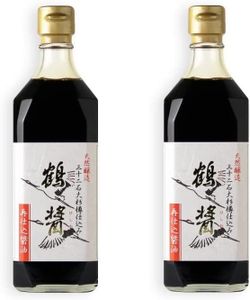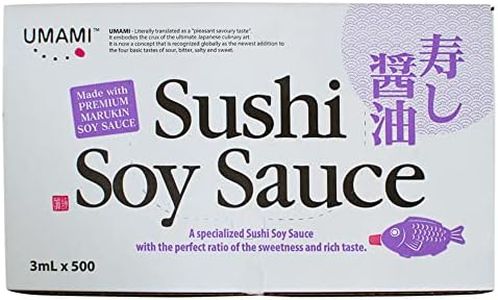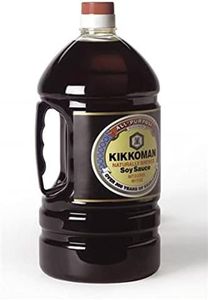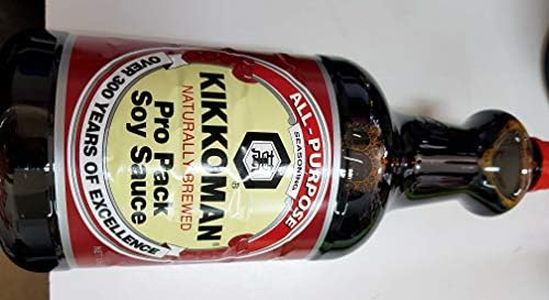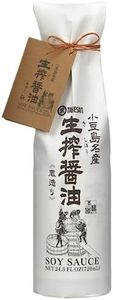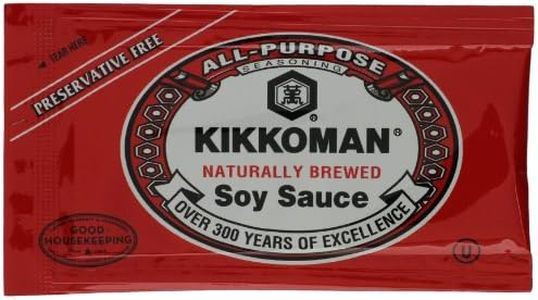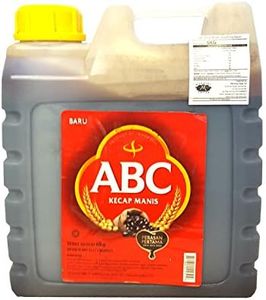We Use CookiesWe use cookies to enhance the security, performance,
functionality and for analytical and promotional activities. By continuing to browse this site you
are agreeing to our privacy policy
10 Best Soy Sauces
From leading brands and best sellers available on the web.Buying Guide for the Best Soy Sauces
Selecting the right soy sauce can greatly influence the taste of your dishes, from simple stir-fries to elaborate marinades. Soy sauce comes in many styles and flavors, each best suited to different uses and cuisines. When picking a soy sauce, it's helpful to consider your cooking habits, the types of dishes you frequently make, and your preferences for flavor intensity and saltiness. Learning about the key characteristics of soy sauce will help you find the one that best fits your needs and elevates your meals.Type (Light, Dark, Tamari, Low Sodium)The type of soy sauce refers to its style and intended use. Light soy sauce is saltier and thinner, ideal for seasoning and dipping. Dark soy sauce is thicker with a sweeter and more robust flavor, commonly used for adding color and depth to cooked dishes. Tamari is a Japanese variation, usually less salty and often gluten-free, favored for its gentle taste in both Japanese and general cooking. Low sodium soy sauce contains less salt and suits those seeking a milder option for health reasons. Choosing the right type depends on your typical recipes—use light for seasoning, dark for color and body, tamari for gluten concerns, or low sodium for lighter-tasting dishes.
Fermentation MethodSoy sauce can be traditionally brewed through natural fermentation or produced quickly using chemical processes. Naturally brewed sauces develop richer, more complex flavors through months of aging, while chemically produced versions often taste harsher and less subtle. For those who appreciate depth and authenticity in their food, traditionally fermented sauces are preferred, while chemically produced ones may suffice for basic seasoning tasks.
Salt ContentSalt content is a key factor because it affects both health and the role soy sauce plays in balancing flavors. Standard soy sauces are quite salty, while low sodium versions reduce this level. Higher salt content works well in dishes needing punchy flavor, and lower salt suits those on sodium-restricted diets or people who want to avoid overpowering the main ingredients. Check labels or taste test to align with your dietary needs and recipe requirements.
Flavor Profile (Umami, Sweetness, Intensity)The flavor profile covers how savory (umami), sweet, or intense the soy sauce tastes. Some are sharply salty with pronounced umami, ideal for boosting flavor in marinades or dipping sauces. Others are more mellow or slightly sweet, better for delicate dishes or as a table condiment. Decide based on what you cook most: bolder, richer sauces for strong-flavored stir-fries and meats, or subtle and sweet for sushi and vegetables.
Ingredients and AdditivesSoy sauce ingredients can vary from just soybeans, wheat, salt, and water to include preservatives, sweeteners, and coloring. Fewer, more natural ingredients usually mean a purer and more authentic product. If you have allergies (like gluten) or are mindful of additives, check labels for extra ingredients. Opt for simple, natural ingredient lists when authenticity and purity matter most to you.
Consistency (Thickness)Consistency refers to how thick or thin the soy sauce is. Lighter versions pour easily and are best for general seasoning, while thicker, syrupy ones (like dark soy sauce or some finishing sauces) are used to glaze, coat, or add shine to dishes. Pick thinner sauces for everyday use and marinating, and reserve thicker or glaze-like soy sauces for finishing or special presentations.

